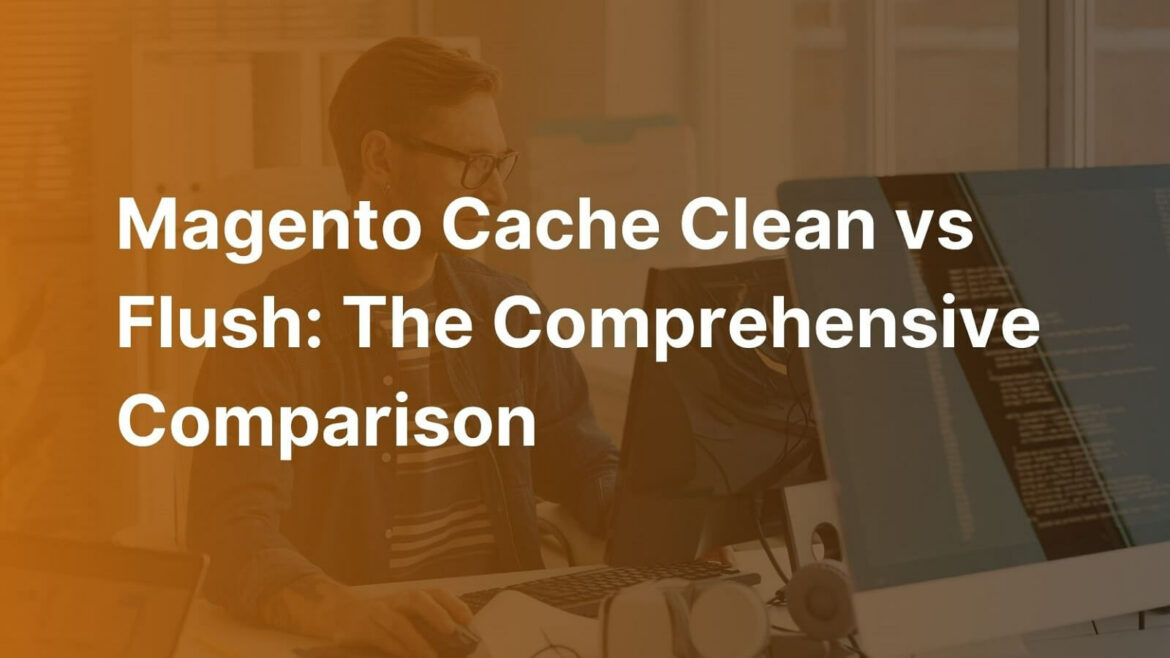Lead In
Adding more data can potentially overload your website or slow down its performance, which can significantly affect the customer experience on your eCommerce platform. Therefore, managing the cache by clearing or flushing it is essential to address this issue. However, have you ever wondered about the comparison of Magento cache clean vs flush? If yes, then you have come to the right place.
In this article, we’re going to give you valuable insight into Magento 2 cache clean vs flush, along with useful knowledge about caching in Magento 2. Don’t hesitate any longer, let’s scroll down to view details.
Magento Cache Clean vs Flush: What is The Difference?
The Magento 2 cache management system enhances the speed of your website by handling the process of collecting, merging, and saving the configuration of all modules. Distinguishing between cache clean and cache flush in Magento 2 is essential for optimizing the performance of your eCommerce platform.
The Difference Between Magento 2 Cache Clean and Cache Flush
- On the one hand, Magento cache clean removes all enabled Magento-related caches without affecting other non-Magento server parts.
- Magento cache clean does not remove the items stored in the cache.
- On the other hand, Magento cache flush clears all stored data in the cache storage, affecting other storage parts within the same storage system.
- Magento cache flush clears out all items in the same cache storage.
Command for Magento 2 Cache Clean and Cache Flush
- Command for cache clean: php bin/magento cache:clean
- Command for cache flush: php bin/magento cache:flush
Both of these functionalities in Magento 2 contribute to reducing page load times and enhancing overall site speed, hence improving user experience on your eCommerce websites.
However, it requires decent technical knowledge and skills to enable and disable caches in Magento 2. If you’re not confident enough to do it yourself manually, you can contact an expert. And expects from BSS Commerce might be one of your best options.
Our top-notch Magento experts can provide you with solutions to enable and disable the most appropriate caches with the Magento site. Besides Magento-enabling and Magento-disabling solutions, we also provide a number of other services for Magento speed optimization including:
- Audit Magento server: We examine all server configurations and the way your site proceeds with hardware and software such as web server, varnish, SSL, HTTP2, Redis, and so on.
- Detect unused code: Based on Magento code standards, we will review and detect unnecessary code on your whole site.
- Audit front end and database optimization: We will advise if any actions can be taken to make sites in Magento faster.
How to Flush Cache in Magento 2?
Option 1: Flush Cache via Admin Panel
- Go to your Magento 2 admin panel
- Access “System”
- Navigate to “Cache Management”
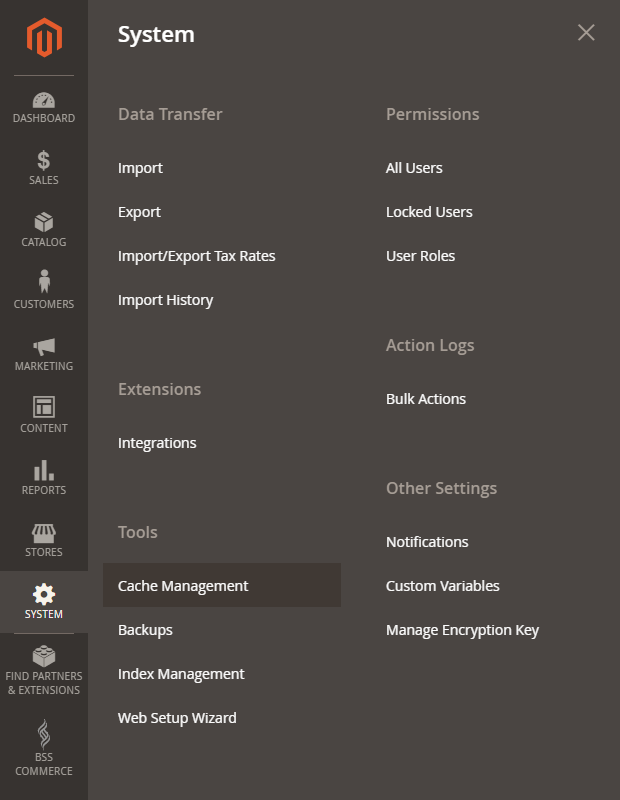
- Select the cache type you want to refresh and choose ‘Submit’

- Click on the orange “Flush Magento Cache” button

Option 2: Flush Cache via Command Line
- Navigate to your terminal
- Go to Magento 2 Root Directory
- Run either the following command: php bin/magento cache:flush or php bin/magento c:f
- Save, exit, and check the results
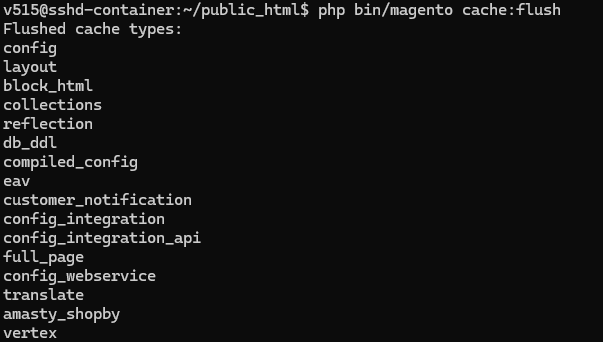
How to Enable Cache in Magento 2?
Option 1: Enable Cache via Admin Panel
- Go to your Magento 2 admin panel
- Access “System”
- Navigate to “Cache Management “
- Choose the cache types you want to enable
- Select “Enable” from the “Actions” dropdown menu

- Click on Submit” and here is the result:

Option 2: Enable Cache via Command Line
- Navigate to your terminal
- Go to Magento 2 Root Directory
- Run the following command: php bin/magento cache:enable
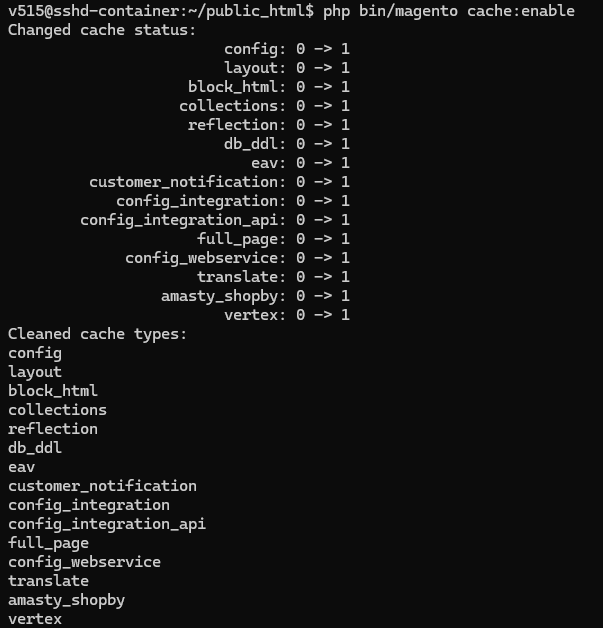
To disable all cache types, run this command line below:
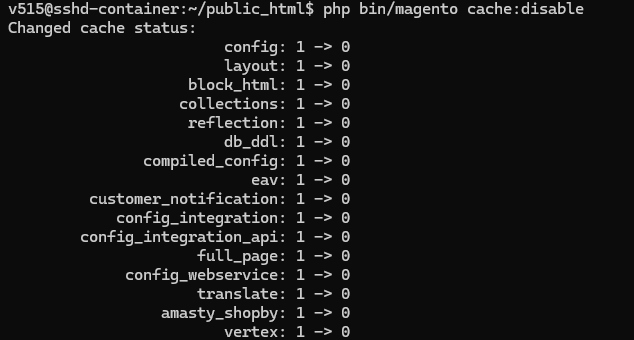
If you want to enable a specific cache type, you can use this command: php bin/magento cache:enable CACHE_TYPE.
Here is how you can enable the ‘Collections’ cache type:
To disable the ‘Collections’ cache type, please run the command line below:

- Save, exit, and check the results
What is Magento Caching?
Cache is basically a simple, fast, and highly efficient method to enhance website performance. Magento provides a comprehensive range of essential cache types for ecommerce stores, enabling users to easily activate or deactivate caches using a single command line. In Magento 2, there are 12 different categories of cache, including:
- Configuration (config): The cache contains store-specific configurations in both the file system and database. Magento gathers configuration data from various modules, combines it, and then stores the consolidated result in the cache to enhance the performance of the store.
- Layouts (layout): It assists in cleaning or flushing this cache type following the modification of layout files.
- Blocks HTML output (block_html): This cache cleans or flushes HTML page sections based on block type after making changes to the view layer.
- Collections Data (collections): This feature aids in caching the outcomes of database inquiries. It cleans or flushes caches when your custom module employs processes that generate cache entries Magento is unable to manage.
- Reflection Data (reflection): It removes a dependency between the WebAPI module and the Customer module.
- Database DDL operations (db_ddl): This cache is associated with the Database schema. It cleans or flushes when custom modifications are made to the database schema. One method to update the database schema automatically is by utilizing the Magento command setup:db-schema:upgrade.
- EAV types and attributes (eav): Metadata linked to EAV attributes (such as store labels, PHP code references, attribute display, search configurations, etc.). You generally do not need to manually clear or flush this cache.
- Integrations Configuration (config_integration): It cleans or flushes this cache after adding new or changing existing integrations.
- Integrations API Configuration (config_integration_api): Compiled integration APIs configuration of the Store’s Integrations.
- Page Cache (full_page): Magento automatically manages the cleanup of this cache, however, third-party developers have the ability to place data in any cache segment. It cleans or flushes after code modifications that impact HTML output. It is advised to leave this cache enabled.
- Translations (translate): After merging translations from all modules, the merger cache will be cleaned.
- Web Services Configuration (config_webservice): It assists in caching the Web API Structure.
FAQs
What is The Difference Between Cache Clean and Cache Flush in Magento 2?
- Magento cache clean removes all enabled Magento-related caches without affecting other non-Magento server parts. Magento cache clean does not remove the items stored in the cache.
- Magento cache flush clears all stored data in the cache storage, affecting other storage parts within the same storage system. Magento cache flush clears out all items in the same cache storage.
What Are Some of The Benefits of Enabling Cache in Magento?
By storing commonly accessed data, enabled cache types help speed up page load times, enhance overall site speed, hence improving user experience on your eCommerce websites. Some common enabled cache types include:
- Configuration: Saves configuration files for quicker access.
- Layout: Caches layout construction instructions to speed up page rendering.
- Collections Data: Stores database queries associated with collections, minimizing the need for repetitive queries.
- Reflection: Stores API interface data for quicker access.
- Page Cache: Caches full page content for faster page loads.
How Can I Enable Cache in Magento?
You can do so using either the Admin panel or the Command line. You can review the specific steps that we mentioned above. Cache is only one of the key factors that affects your store speed. To optimize the rapidity, you need to
focus on other technical aspects like server audit, code detection, front end audit etc. With the 11+ years of expertise in the eCommerce industry, BSS Commerce is the top magento 2 ecommerce development company that can perform these tasks for you efficiently. Let’s check out our Magento 2 speed optimization services!
Also, don’t forget to check out these 25+ best Magento speed optimization tips to revolutionize your Magento’s store speed
Bottom Line
When it comes the Magento cache clean vs flush, the Magento 2 main difference is that cache:clean will wipe all the enabled items which are Magento-related, and while cache:flush wipes out the cache storage.
Caching plays a crucial role in Magento 2. If you are concerned about optimizing your store’s performance and enhancing the customer experience, it’s time to keep an eye on your cache management. Hopefully, with the above useful information, this post has given you valuable insights into caching in Magento 2. In case you are seeking experts to assist you with enabling or disabling caches in Magento 2, consider BSS Commerce as your top choice.
CONTACT NOW to let us know your problems. We are willing to support you every time.
